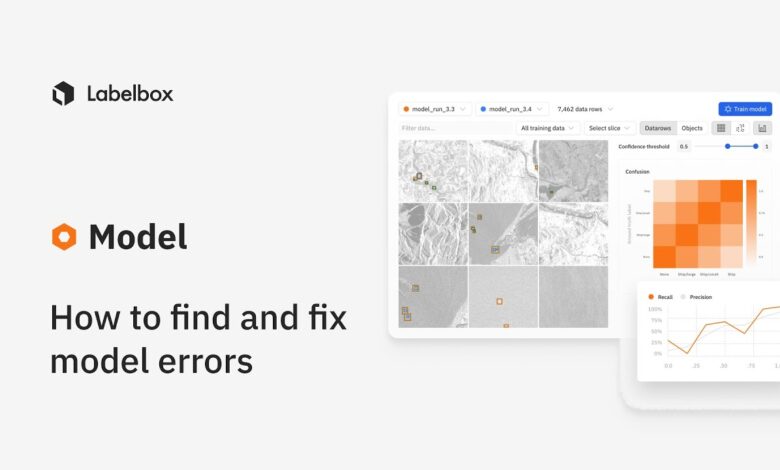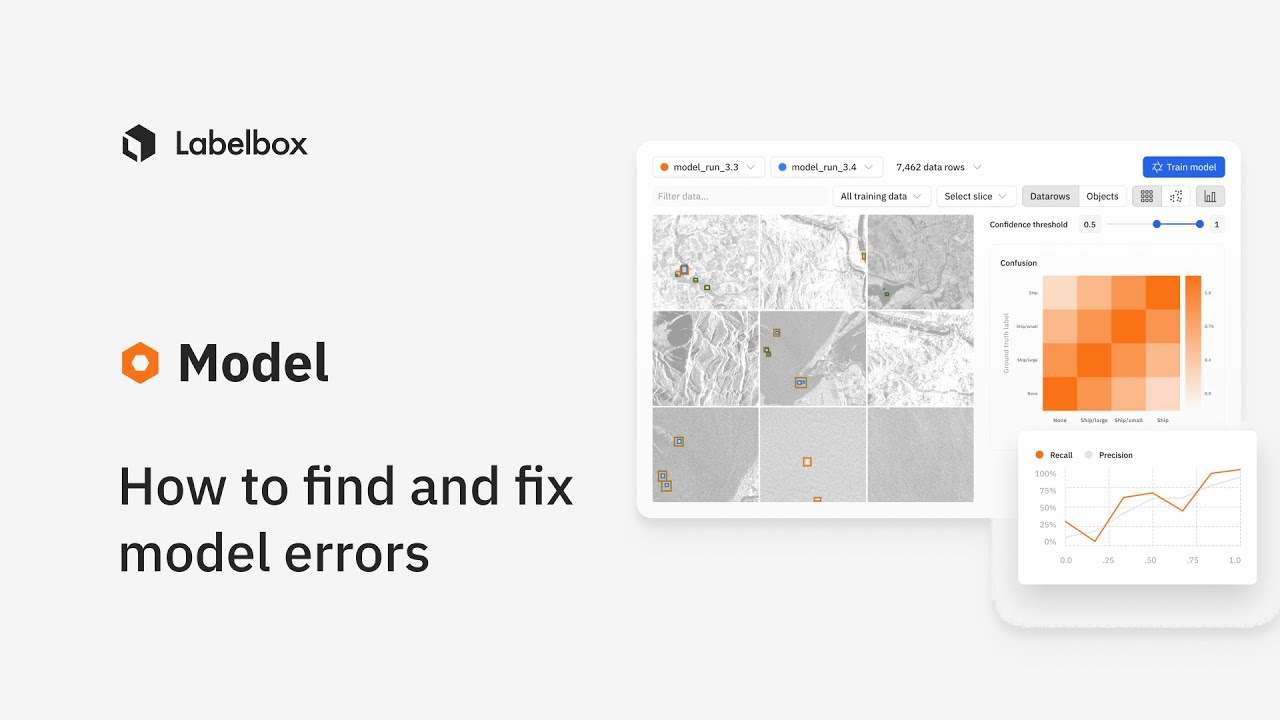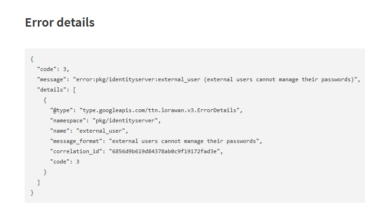
Data Processing and Transfers A Deep Dive
Data processing and transfers are the lifeblood of the modern digital world, silently powering everything from online shopping to scientific breakthroughs. We often take these processes for granted, but understanding the intricacies of how data is handled, moved, and secured is crucial in today’s increasingly interconnected society. This post will explore the fascinating world of data processing and transfers, delving into the techniques, protocols, security measures, and governance practices that make it all work.
From cleaning and transforming raw data into usable information to employing secure protocols for transferring sensitive data across networks, the journey is complex and multifaceted. We’ll examine different data processing techniques, including data cleaning, transformation, integration, and handling missing data. We’ll also explore various data transfer methods, including cloud storage, APIs, and secure protocols like HTTPS and SFTP, highlighting their advantages and disadvantages.
Finally, we’ll discuss crucial aspects of data security, privacy, governance, and compliance, ensuring a comprehensive understanding of this critical area.
Data Processing Techniques

Data processing is the backbone of any successful data analysis project. It involves a series of steps to transform raw data into a usable and insightful format. This process is crucial for ensuring the accuracy, reliability, and efficiency of subsequent analyses. Without proper data processing, even the most sophisticated analytical techniques will yield unreliable results.
Data Cleaning and Preprocessing
Data cleaning, also known as data cleansing, is the process of identifying and correcting (or removing) inaccurate, incomplete, irrelevant, duplicated, or improperly formatted data within a dataset. This initial step is vital for ensuring data quality and avoiding biases in later analyses. Common techniques include handling missing values (imputation or removal), outlier detection and treatment, and data transformation to address skewed distributions.
For instance, dealing with missing values might involve replacing them with the mean, median, or mode of the respective feature, or using more sophisticated methods like k-Nearest Neighbors imputation. Outliers, data points significantly different from the rest, can be addressed by removing them, capping them at a certain threshold, or transforming the data using techniques like logarithmic transformation.
Data Transformation and Normalization
Data transformation involves applying mathematical or statistical functions to change the scale or distribution of data. This is often necessary to improve the performance of machine learning algorithms or to make the data easier to interpret. Common transformations include standardization (centering data around zero with unit variance), normalization (scaling data to a specific range, like 0-1), and log transformation (reducing the impact of outliers).
Normalization, in particular, is important for algorithms sensitive to feature scaling, such as k-means clustering or neural networks. For example, if we have features with vastly different ranges (e.g., age ranging from 18-80 and income ranging from 20,000-200,000), normalization ensures that all features contribute equally to the model’s learning process.
Data Integration Strategies
Data integration involves combining data from multiple sources into a unified view. Different strategies exist, each with its own advantages and disadvantages. Data merging involves combining data based on common keys or attributes. Data concatenation adds data from different sources without considering relationships. Data federation creates a virtual view of multiple data sources without physically merging them.
The choice of strategy depends on factors like data volume, data structure, and the desired level of data integration. For example, a large company might use data federation to combine data from different departments without needing to physically move or consolidate all the data into a single location.
Handling Missing Data in a Large Dataset
Missing data is a common problem in large datasets. A robust workflow is crucial for handling this effectively. The first step involves identifying the type of missing data (Missing Completely at Random (MCAR), Missing at Random (MAR), or Missing Not at Random (MNAR)). Different strategies are employed based on the type and pattern of missing data. Techniques include deletion (listwise or pairwise), imputation (mean, median, mode, regression, k-NN), and model-based methods.
For example, in a large dataset with many missing values, imputation using k-NN might be more appropriate than simple mean imputation, as it leverages the information from neighboring data points. Choosing the right method depends on the characteristics of the data and the impact of missing data on the analysis.
Efficiency of Data Processing Algorithms
| Algorithm Name | Time Complexity | Space Complexity | Applicability |
|---|---|---|---|
| Linear Regression | O(n) | O(n) | Regression tasks, prediction |
| k-Nearest Neighbors | O(nk) | O(n) | Classification, regression, outlier detection |
| Decision Tree | O(n log n) | O(n log n) | Classification, regression |
| k-Means Clustering | O(nkt) | O(n) | Clustering, unsupervised learning (t = number of iterations) |
Data Transfer Methods and Protocols: Data Processing And Transfers

Moving data securely and efficiently is crucial in today’s interconnected world. This involves choosing the right transfer method and protocol, understanding their strengths and weaknesses, and implementing best practices to maintain data integrity. This section delves into the various methods and protocols available, highlighting key considerations for secure data transfer.
Secure Data Transfer Protocols
Secure data transfer protocols are essential for protecting sensitive information during transit. Protocols like HTTPS, SFTP, and FTPS offer varying levels of security and are suitable for different applications. HTTPS (Hypertext Transfer Protocol Secure) is widely used for web communication, encrypting data exchanged between a web browser and a server. SFTP (Secure File Transfer Protocol) provides a secure way to transfer files over an SSH (Secure Shell) connection, offering strong authentication and encryption.
FTPS (File Transfer Protocol Secure) extends the standard FTP protocol with SSL/TLS encryption, securing both the control and data channels. Each protocol offers different security features and performance characteristics, making the choice dependent on specific needs.
Advantages and Disadvantages of Data Transfer Methods
Various methods exist for transferring data, each with its own set of advantages and disadvantages. Cloud storage offers scalability and accessibility, but concerns about vendor lock-in and data security persist. File transfer methods, such as using FTP or SFTP, are straightforward for transferring files between systems but may lack the scalability and management features of cloud storage. APIs (Application Programming Interfaces) enable programmatic data exchange, offering automation and integration capabilities but require development expertise and careful security considerations.
The optimal method depends on factors such as data volume, security requirements, and technical expertise.
Best Practices for Ensuring Data Integrity During Transfer, Data processing and transfers
Maintaining data integrity during transfer is paramount. Implementing checksums or hash functions allows for verification of data accuracy after transfer. Using digital signatures ensures data authenticity and non-repudiation. Regular backups and version control further safeguard against data loss or corruption. Implementing robust error detection and correction mechanisms during the transfer process minimizes the risk of data inconsistencies.
Thorough testing and validation procedures are crucial to ensure the reliability of the transfer process.
The Role of Encryption in Securing Data Transfers
Encryption plays a vital role in securing data transfers by transforming readable data (plaintext) into an unreadable format (ciphertext). Symmetric encryption uses the same key for encryption and decryption, offering high speed but requiring secure key exchange. Asymmetric encryption uses separate keys for encryption and decryption, providing better key management but being slower. Choosing the appropriate encryption algorithm and key length is crucial for achieving the desired level of security.
Strong encryption is fundamental to protecting sensitive data during transfer, especially across untrusted networks.
Comparison of Data Transfer Protocols
The choice of data transfer protocol depends on several factors. Here’s a comparison based on speed, security, and cost:
- HTTPS: Relatively fast, good security (depending on implementation and cipher suite), low cost (generally built into web servers).
- SFTP: Moderate speed, very strong security (due to SSH), moderate cost (requires SSH server software).
- FTPS: Moderate speed, good security (depending on implementation and cipher suite), moderate cost (requires FTP server software with SSL/TLS support).
- APIs: Speed varies greatly depending on implementation and network conditions, security depends on implementation and API design, cost varies greatly depending on infrastructure and development efforts.
Data Security and Privacy in Transfer
Safeguarding data during transfer is paramount. The very act of moving data, whether across a network or to a cloud storage provider, exposes it to a range of threats. Understanding these vulnerabilities and implementing robust security measures is crucial for maintaining data integrity and complying with relevant regulations.
Potential Vulnerabilities in Data Transfer Processes
Data breaches during transfer can stem from various sources. Network interception, where malicious actors eavesdrop on network traffic, is a significant concern. This can be exacerbated by using insecure protocols or failing to encrypt data in transit. Furthermore, vulnerabilities within the systems handling the transfer, such as outdated software or misconfigurations, can create entry points for attackers.
Finally, human error, such as using weak passwords or falling prey to phishing scams, remains a persistent threat. The consequences of such breaches can range from financial losses and reputational damage to legal penalties and loss of customer trust.
Implementation of Access Control Mechanisms for Data Protection
Robust access control is essential for limiting who can access transferred data. This involves implementing a multi-layered approach. Firstly, network-level security, such as firewalls and intrusion detection systems, can filter and monitor network traffic, blocking unauthorized access attempts. Secondly, data encryption, both in transit and at rest, ensures that even if data is intercepted, it remains unreadable without the correct decryption key.
Thirdly, access control lists (ACLs) restrict access to specific data based on user roles and permissions. Finally, regular security audits and vulnerability assessments are vital to identify and address potential weaknesses in the system. For instance, a company might use role-based access control (RBAC) to ensure only authorized personnel can access sensitive customer data.
Importance of Data Anonymization and Pseudonymization Techniques
Data anonymization and pseudonymization are critical techniques for protecting sensitive information during transfer. Anonymization aims to remove all identifying information from data, making it impossible to link it back to individuals. Pseudonymization, on the other hand, replaces identifying information with pseudonyms, allowing data to be linked back to individuals only with the help of a secure key. Both techniques significantly reduce the risk of data breaches impacting individuals, helping organizations comply with privacy regulations.
For example, a research study might use pseudonymization to protect the identities of participants while still allowing analysis of aggregated data.
Compliance with Relevant Data Privacy Regulations
Adhering to regulations like the General Data Protection Regulation (GDPR) and the California Consumer Privacy Act (CCPA) is non-negotiable for organizations transferring personal data. GDPR, for example, mandates data minimization, requiring organizations to only collect and process the minimum necessary personal data. It also requires organizations to implement appropriate technical and organizational measures to ensure the security of personal data.
CCPA provides California consumers with specific rights regarding their personal data, including the right to access, delete, and opt-out of the sale of their data. Compliance necessitates a comprehensive understanding of these regulations and the implementation of appropriate security measures.
Checklist of Security Measures to Implement During Data Transfer
Before initiating any data transfer, a thorough security assessment is crucial. The following checklist summarizes key security measures:
- Encrypt all data both in transit and at rest.
- Utilize secure protocols such as HTTPS and SFTP.
- Implement strong access control mechanisms, including multi-factor authentication.
- Regularly update software and security patches.
- Conduct regular security audits and penetration testing.
- Establish a robust incident response plan.
- Implement data loss prevention (DLP) measures.
- Comply with all relevant data privacy regulations.
- Provide employee training on data security best practices.
- Monitor network traffic for suspicious activity.
Data Governance and Compliance
Data governance and compliance are critical aspects of responsible data handling. Without a robust framework, organizations risk legal penalties, reputational damage, and loss of customer trust. Establishing clear policies, implementing effective controls, and conducting regular audits are essential for maintaining data integrity and ensuring adherence to relevant regulations.
Establishing Clear Data Governance Policies
A comprehensive data governance policy Artikels how an organization handles its data throughout its lifecycle. This includes defining data ownership, establishing data quality standards, specifying access control mechanisms, and detailing procedures for data retention and disposal. The policy should be easily accessible to all employees and regularly reviewed and updated to reflect changes in legislation and business practices.
A well-defined policy provides a clear framework for decision-making, reducing ambiguity and ensuring consistency in data handling practices across the organization. For instance, a clear policy might specify the acceptable methods for data collection, the required level of data accuracy, and the process for handling data breaches.
Managing Data Access and Usage Rights
A well-structured framework for managing data access and usage rights is crucial for protecting sensitive information. This framework should clearly define who can access what data, under what circumstances, and for what purposes. Role-based access control (RBAC) is a common approach, assigning permissions based on an individual’s job function. Data encryption, both in transit and at rest, adds an additional layer of security.
Regular reviews of access rights are necessary to ensure that permissions remain appropriate and that no unauthorized access is granted. For example, an employee who leaves the company should have their access revoked immediately. Furthermore, access logs should be maintained to track data usage and identify potential security breaches.
The Role of Data Audits in Ensuring Compliance
Data audits are systematic examinations of an organization’s data handling practices to assess compliance with relevant regulations and internal policies. These audits involve reviewing data governance policies, access controls, data security measures, and data retention practices. Auditors verify that data is handled in accordance with legal requirements, such as GDPR or CCPA, and that appropriate security measures are in place to protect sensitive information.
The findings of a data audit can identify areas for improvement and help organizations to strengthen their data governance framework. Regular audits, conducted by internal or external experts, are essential for maintaining compliance and mitigating risks.
Best Practices for Data Retention and Disposal
Data retention policies define how long an organization should keep specific types of data. These policies should be aligned with legal requirements and business needs. Data should be retained only for as long as necessary and securely disposed of when no longer required. Secure disposal methods include data sanitization, which overwrites data to make it unrecoverable, or physical destruction of storage media.
Regular reviews of data retention policies are essential to ensure that they remain current and relevant. For example, a financial institution might be required to retain customer transaction data for a specific period defined by regulatory bodies. Failure to comply with retention policies can lead to significant penalties.
A Hypothetical Data Breach Scenario
A hypothetical data breach scenario could involve a malicious actor gaining unauthorized access to a company’s database through a phishing attack targeting an employee with privileged access. The attacker could exploit a vulnerability in the company’s security software or gain access through stolen credentials. The consequences could include the exposure of sensitive customer data, leading to identity theft, financial losses, and reputational damage for the company. Legal repercussions, including fines and lawsuits, could also follow. Mitigation strategies would involve implementing multi-factor authentication, strengthening security software, conducting regular security audits, and having a comprehensive incident response plan in place. Employee training on security awareness is also crucial to prevent future attacks.
Data Transfer Infrastructure
Building a robust data transfer system requires careful consideration of its architecture and the interplay of various components. Efficient and secure data movement relies on a well-designed infrastructure capable of handling large volumes of data with minimal latency and maximum uptime. This involves choosing the right hardware, software, and network topology to meet specific needs and scale as data volumes grow.Data transfer systems typically follow a layered architecture.
This approach allows for modularity, making it easier to maintain, update, and troubleshoot individual components. The layers often include the data source, the data processing layer, the transfer layer, and the data destination. Each layer contributes to the overall reliability and performance of the entire system.
Typical Architecture of a Data Transfer System
A typical data transfer system comprises several key components working in concert. At the source, we have databases or applications generating the data for transfer. This data is then processed, perhaps transformed or cleaned, before entering the transfer layer. This layer uses servers and network infrastructure to move the data to its destination. The destination might be another database, a data warehouse, a cloud storage service, or an analytical application.
Network protocols manage the communication between these components, ensuring reliable and secure data transmission. Monitoring tools track the entire process, alerting administrators to potential problems.
The Role of Different Components in Data Transfer
Databases act as repositories for the data being transferred, providing structured storage and retrieval mechanisms. Servers handle the processing and transmission of data, acting as intermediaries between the source and destination. They can perform tasks like data transformation, compression, and encryption. Networks, the backbone of the system, provide the communication pathways for data movement. The choice of network technology significantly impacts speed, reliability, and security.
Comparison of Network Topologies for Data Transfer
Several network topologies exist, each with its strengths and weaknesses. A bus topology, for instance, is simple but susceptible to single points of failure. A star topology, more common in modern systems, offers improved reliability as each device connects directly to a central hub or switch. Mesh topologies provide high redundancy and fault tolerance, but are more complex to implement and manage.
The choice of topology depends on factors such as cost, scalability requirements, and tolerance for downtime. For example, a large enterprise might opt for a mesh topology to ensure high availability, while a smaller organization might find a star topology sufficient.
Designing a Scalable and Reliable Data Transfer Infrastructure
Scalability and reliability are paramount in data transfer infrastructure design. This involves employing technologies that can handle increasing data volumes and user demands. Load balancing techniques distribute traffic across multiple servers, preventing bottlenecks. Redundancy in hardware and network connections ensures continuous operation even in the event of component failures. Data replication across multiple sites provides disaster recovery capabilities.
Careful capacity planning, based on projected growth, is essential to prevent performance degradation over time. For example, cloud-based solutions often offer inherent scalability, allowing for easy adjustments to resource allocation based on real-time needs.
Visual Representation of a Data Transfer Pipeline
Imagine a pipeline. At the beginning (the source), a database sits, containing the raw data. This data flows through a processing unit (servers performing data cleaning and transformation). Then, it enters the transfer layer, represented by a network (a series of interconnected nodes). This network uses protocols (like TCP/IP) to route the data securely and reliably.
Finally, the data reaches the destination, another database or storage system, where it is stored and ready for use. Each stage has monitoring tools observing its performance and reporting any issues. This visual representation illustrates the sequential nature of the process and the interaction between different components.
Concluding Remarks
Navigating the world of data processing and transfers requires a keen awareness of the technical details, security implications, and legal frameworks involved. Understanding the various methods, protocols, and best practices discussed here is essential for anyone working with data, regardless of their industry or role. By implementing robust data governance policies, employing secure transfer protocols, and prioritizing data privacy, we can ensure the safe and efficient movement of data, driving innovation and progress while safeguarding sensitive information.
It’s a journey worth understanding, and one that continues to evolve with the ever-changing technological landscape.
Common Queries
What is data anonymization?
Data anonymization is the process of removing or altering personally identifiable information (PII) from a dataset to protect individual privacy while still allowing for data analysis.
What is the difference between HTTPS and SFTP?
HTTPS secures web traffic, while SFTP secures file transfers. HTTPS uses SSL/TLS, while SFTP uses SSH for encryption.
How often should data backups be performed?
The frequency of data backups depends on the criticality of the data and your recovery time objective (RTO). Daily or even more frequent backups might be necessary for crucial data.
What is a data breach?
A data breach is an unauthorized access to or disclosure of sensitive data. This can have serious legal and financial consequences.
What is the role of a Data Protection Officer (DPO)?
A DPO is responsible for overseeing data protection compliance within an organization, particularly concerning regulations like GDPR.





